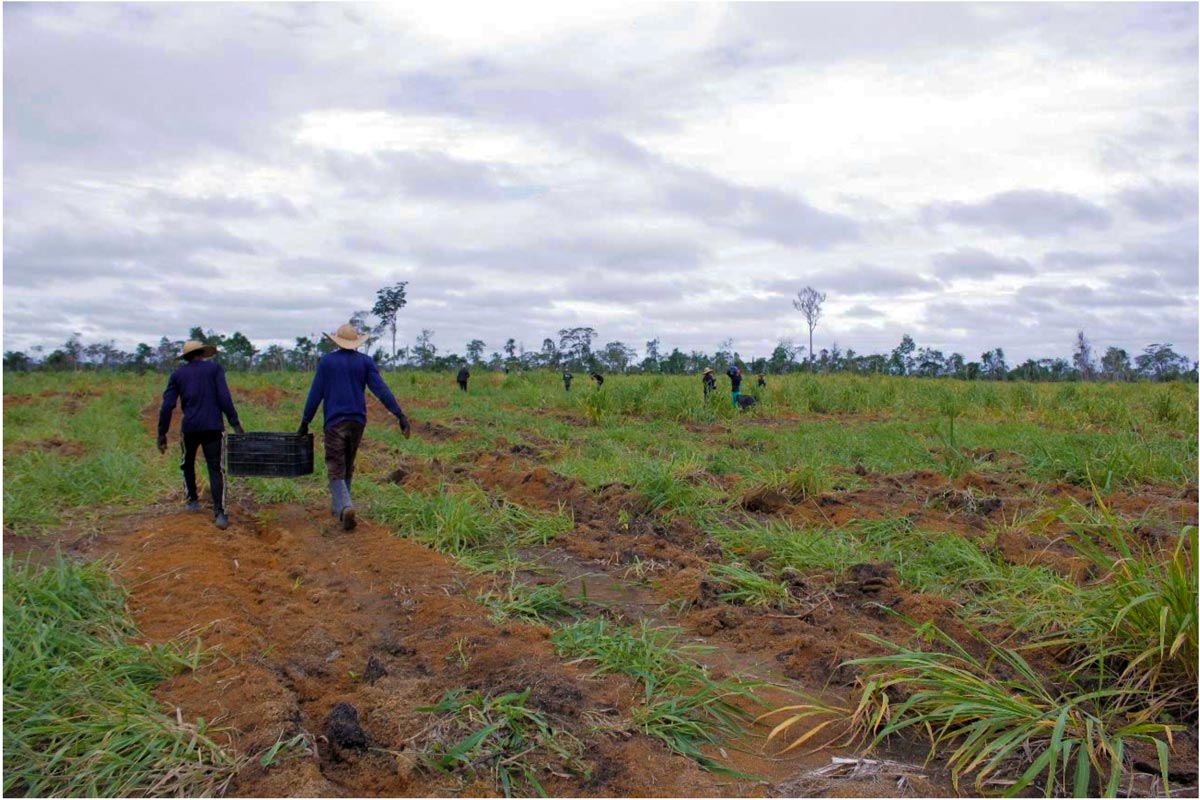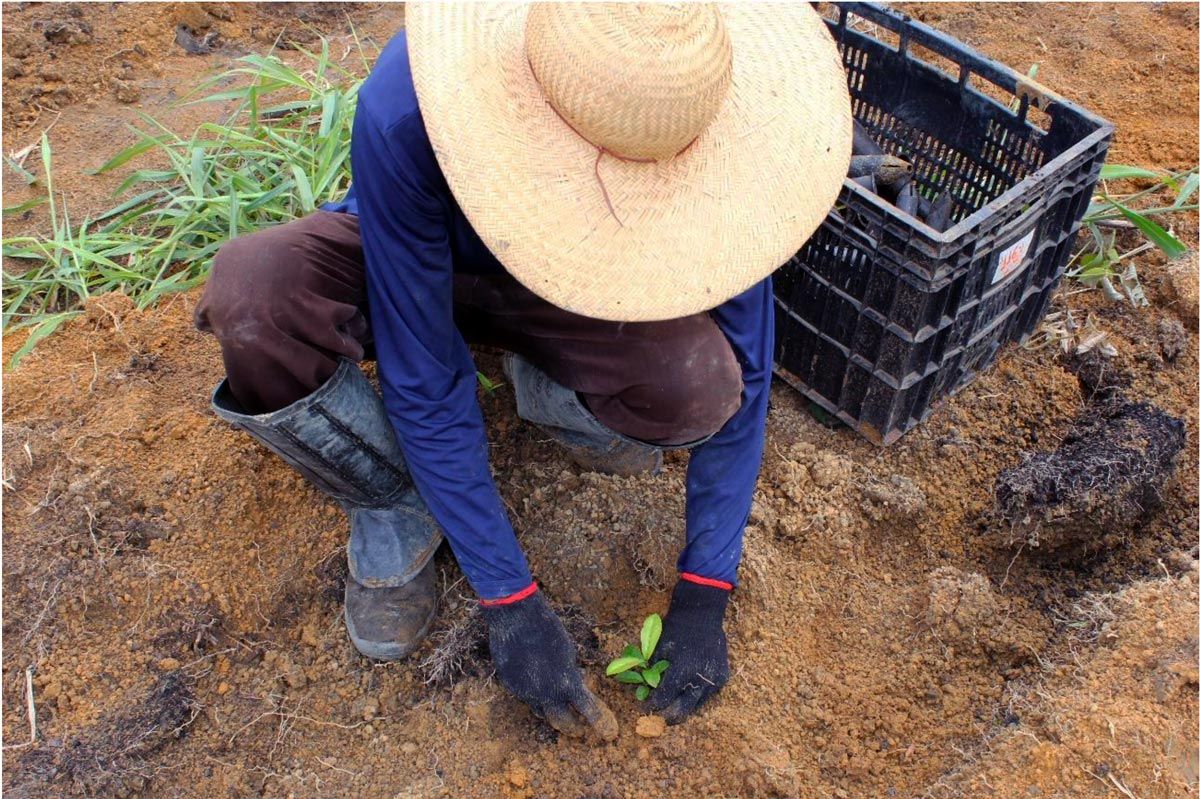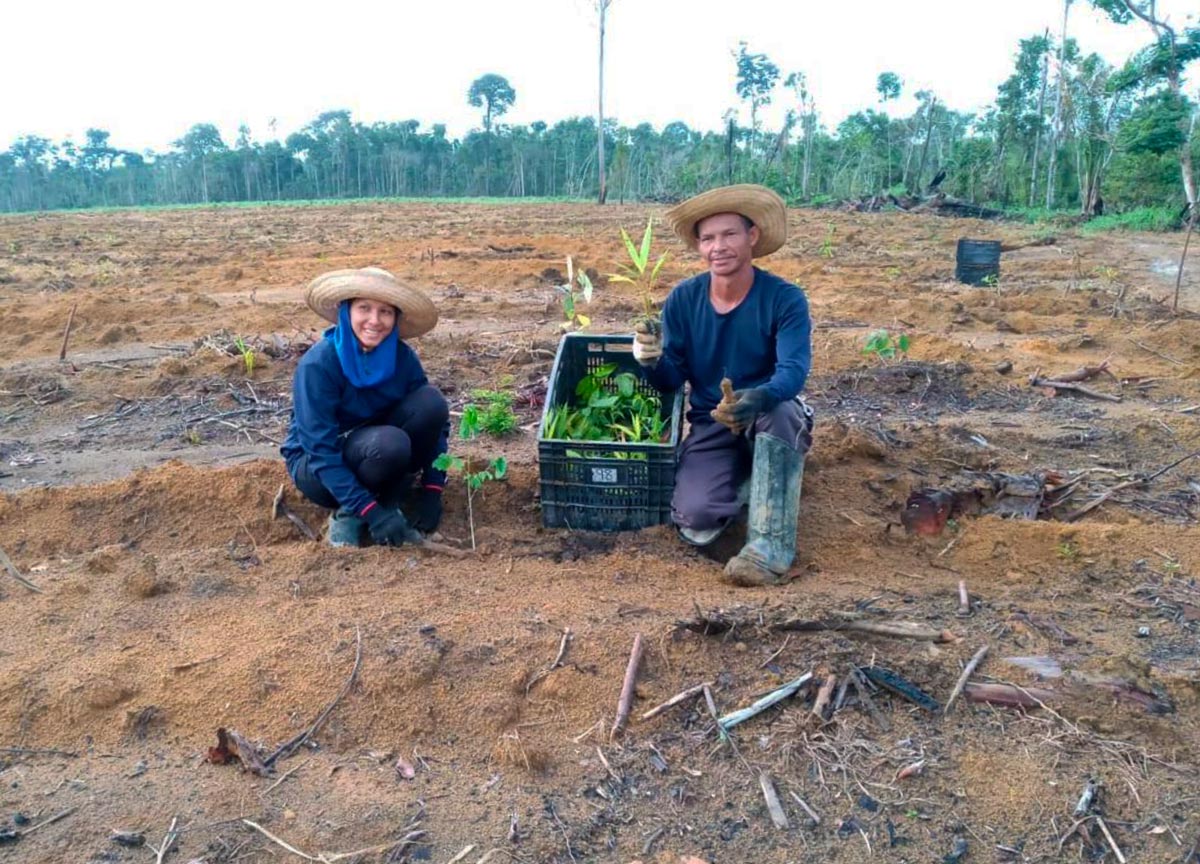After an initial phase of setting up nurseries and identifying plots of land to be reforested, the Brazilian reforestation project financed by Reforest'Action and led in the field by the NGO Rioterra continued with the planting of 250,000 trees of 34 different native species, between December 2020 and February 2021, in 5 deforested and abandoned plots of land within the protected reserve of Rio Preto Jacundá.

The first operation to restore native vegetation in the Amazon
Located in the state of Rondônia, in the southwestern Brazilian Amazon, which is part of the "arc of deforestation," those vast Amazonian territories where the agricultural frontier and deforestation have greatly increased in recent decades, the highly innovative project involves the local communities of the protected reserve of Rio Preto Jacundá in the creation of edible forests. Named "extractivist", this reserve is a legally protected territory in Brazil, and forms a continuous ecosystem, essential for the conservation of local biodiversity, soils, water cycle and carbon storage. It aims to preserve the livelihoods and culture of the traditional populations who live there, by guaranteeing them free access to the natural resources of these areas for an unlimited period of time. In return, these populations commit themselves to a sustainable use of the natural resources at their disposal.
Within the Rio Preto Jacundá reserve, parcels of land have historically been deforested to establish conventional pastures, to the detriment of local traditional populations. These pastures were severely degraded and have been reforested thanks to the project. The edible forests created are being returned to the traditional people who have lived in the reserve for generations.
This restoration project in the Rio Preto Jacundá reserve, led on the ground by the NGO Rioterra and financed by Reforest'Action, is the first large-scale recovery of native vegetation in degraded areas in the Amazon region, and will serve as a prototype for the deployment of similar operations in the Amazon forest in the future.

250,000 trees of 34 different species
Between December 2020 and February 2021, our project leader in the field, the NGO Rioterra, has been busy transporting the seedlings produced in nurseries to the planting areas within the Rio Preto Jacundá reserve, and then planting them in the field. At the same time, training and awareness-raising activities for the traditional populations of the reserve were carried out in order to fully involve them in the project, which will benefit them. In total, 250,000 trees of 34 different native species have taken root in five deforested and abandoned plots of land, covering approximately 165 hectares, according to a planting scheme that includes a main crop in the lower stratum, composed for example of pupunha, açaí or cupuaçu, whose fruit production will be used for local consumption by traditional populations or for sale on local markets, and a plant cover in the upper stratum, composed of endemic forest species such as cedrela fissilis, amburana acrana, courbaril, itaúba or red angelica.
Benefits of the project for the environment and the population
The next few months will be devoted to monitoring and maintaining the trees planted by our partner Rioterra to ensure their proper growth. This ecosystemic restoration project in the Amazon region will induce, in the long term, important benefits for the environment and the populations:
- Environmental benefits, such as the restoration of ecosystem services like water conservation, climate regulation and pollination;
- Economic benefits, such as contributing to the food security of local communities and the development of the local agro-industry thanks to the numerous tree species planted;
- Social benefits, such as the creation of jobs and income, particularly through the inclusion of women and youth in the restoration process.
